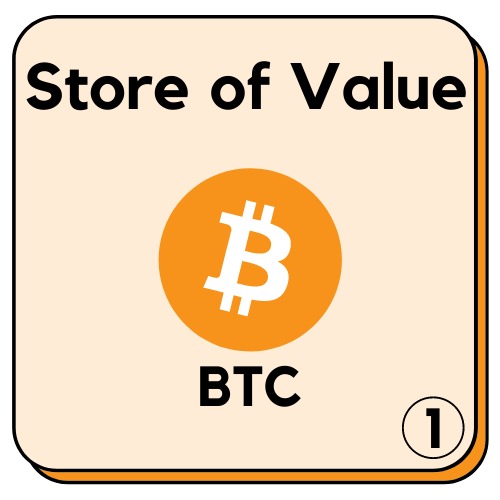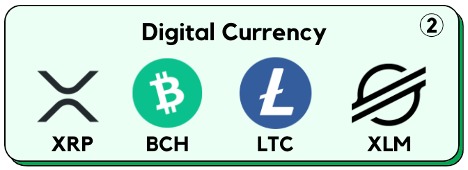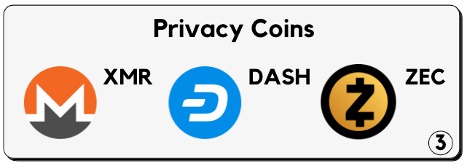Top 8 use-cases as of June 2021
In 2021, the cryptocurrency market is extremely diverse and is about more than just Bitcoin. That is not to say that Bitcoin is dead or anywhere close to it, Bitcoin is still the number one cryptocurrency with a market capitalization dominance of 45% as I write this article versus 20% for Ethereum, the second biggest cryptocurrency.
However, it is true to assume that cryptocurrency as a whole has become a microcosm of broader economies. It’s not even accurate to use the term “cryptocurrency” anymore to refer to the entire ecosystem as many more tokens are focused on utility rather than peer-to-peer transfer of value. This is why I preferred the term of “crypto asset” for this article.
All crypto assets share a common heritage with Bitcoin’s genesis that is ultimately linked to the creation of a new technology called Blockchain and all cryptos aim to disrupt some centralized established industries. How they do that is largely dependent upon the sector in which they are operating. So, let's have a look at the various fascinating and convincing use-cases of this budding technology in order to get a better understanding of what types of crypto assets are out there and, more importantly, what sectors they work in.
Coins vs Tokens: An Important Distinction
First, I believe it is important to make a distinction between coins and tokens before diving into the different types of crypto assets we can find in the ecosystem.
A coin is a crypto asset that is native to its own blockchain. Bitcoin on the Bitcoin blockchain and Ether on the Ethereum blockchain are examples of coins. Unlike coins, tokens do not have their own blockchain. A token is a crypto asset that is foreign to the blockchain in which they operate and the latter acts as a host for the former. Ultimately, tokens work on specific coin blockchains. The most popular tokens are the so-called ERC-20 tokens which are built on top of Ethereum blockchain.
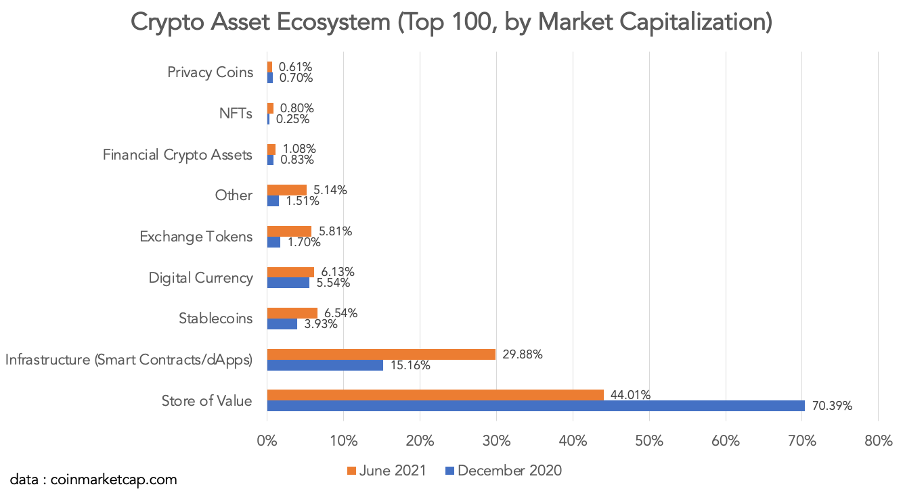
1 - Store of Value
There is one crypto asset that fits in this category, Bitcoin. We can see this with the recent adoption of Bitcoin in the treasuries of some major U.S. companies. With inflation expected to continue its upward trajectory, more and more companies are converting their cash reserves into Bitcoin. We can mention MicroStrategy’s ($MSTR) Michael Saylor and Tesla’s ($TSLA) Elon Musk who purchased 90,000 and 40,000 BTC respectively for their company treasury.
However, Bitcoin was not meant to be considered a Store of Value. The most famous crypto asset was originally designed to be a Digital Currency as emphasized in Bitcoin’s whitepaper called “Bitcoin: A Peer-to-Peer Electronic Cash System”. Bitcoin was designed as an alternative to traditional fiat currencies. Due to direct use limitations such as high transaction fees or volatility, Bitcoin is more akin to gold or other store assets today. Bitcoin is more of an “investment” than “cash”.
On the other hand, Bitcoin Cash, a crypto asset that came to life after a Bitcoin hard fork related to the “Blocksize War”, intends to process transactions more quickly than the Bitcoin network, meaning that wait times and transaction processing fees tend to be lower.
2 - Digital Currency
Bitcoin derivatives with technology that focus largely on quicker and cheaper transactions, such as Bitcoin Cash, fall under this category. Ultimately, when we talk about “cryptocurrencies” we should think of crypto assets that fall within this category. It comprises some of the most well-known crypto assets that serve as monetary and payment systems, allowing value transfers to take place without the involvement of a third party. Some are attempting to compete with fiat money, while others are focusing on payments for a particular use-case or sector.
3 - Privacy Coins
Privacy Coins are a sub-category of Digital Currency. Privacy Coins are cryptocurrencies designed for confidential transactions and can be used to send or receive value anytime, anywhere and in secrecy. Users of Privacy Coins can make untraceable and anonymous transactions.
Unlike the Bitcoin blockchain, where all transactions are public and linked to public Bitcoin addresses, it is impossible to trace the owners of Privacy Coins due to the confidential and encrypted nature of the transactions.
One can of course worry about the use of these anonymous Privacy Coins by criminals for transactions related to the sale of illegal products on the darknet, money laundering, internet scams, webcam blackmail, cryptojacking, etc... On the other hand, the respect of your privacy and the confidentiality of your transactions is a fundamental right that is covered by these Privacy Coins.
4 - Stablecoins
By definition, a Stablecoin is a type of crypto asset that is stable in value because it is based on the value of another asset.
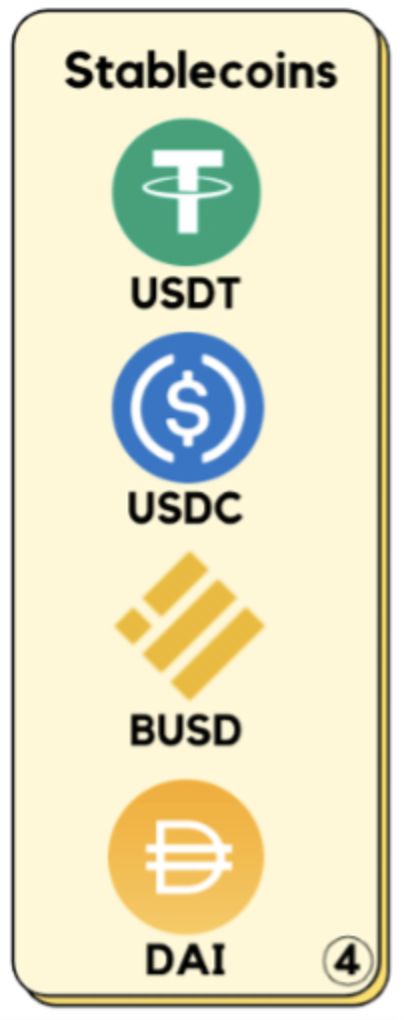 The underlying assets of Stablecoins are diverse. Classically, most are backed by a fiat currency like the dollar, euro or yen such as Tether (USDT). Others, are based on commodities or on the value of other crypto assets such as MakerDao’s Stablecoin (DAI).
The underlying assets of Stablecoins are diverse. Classically, most are backed by a fiat currency like the dollar, euro or yen such as Tether (USDT). Others, are based on commodities or on the value of other crypto assets such as MakerDao’s Stablecoin (DAI).
Stablecoins seek to solve various problems encountered in the cryptosphere:
- Reducing volatility: They can be used by some traders to protect themselves from market movements as their value is in essence stable.
- Reducing conversion costs: They avoid the sometimes expensive conversion of crypto to fiat currency, for crypto to crypto conversions generating less costs.
- Reducing taxation: As there is no conversion to fiat currency, Stablecoins can help avoid certain taxes.
5 - Infrastructure (Smart Contracts/dApps)
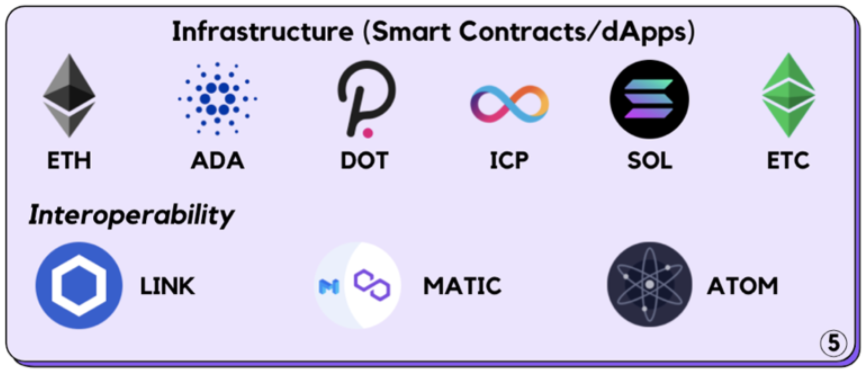 Infrastructure, or platform crypto assets, notably those that deal with smart contracts and decentralized applications, or dApps, are the next important category to address. The most intriguing use of blockchain/crypto is smart contracts/dApps, which allow for a wide range of innovative applications and decentralized financial systems (DeFi). While Bitcoin demonstrated that a payment system can operate in a decentralized peer-to-peer environment, it was the emergence of Ethereum that propelled the whole area ahead and closer to general acceptance and use. As users saw the actual potential of dApps and smart contracts, Ethereum marked the second-generation blockchain era.
Infrastructure, or platform crypto assets, notably those that deal with smart contracts and decentralized applications, or dApps, are the next important category to address. The most intriguing use of blockchain/crypto is smart contracts/dApps, which allow for a wide range of innovative applications and decentralized financial systems (DeFi). While Bitcoin demonstrated that a payment system can operate in a decentralized peer-to-peer environment, it was the emergence of Ethereum that propelled the whole area ahead and closer to general acceptance and use. As users saw the actual potential of dApps and smart contracts, Ethereum marked the second-generation blockchain era.
Smart contracts were a significant step forward from what Bitcoin introduced us to, since they allow you to exchange not only money but also property, shares, and practically anything of value. Importantly, it does it in a transparent, conflict-free manner, eliminating the use of a middleman's services and costs. Consider smart contracts as if they were a vending machine. If you want to set up a contract with someone for business, ownership, or anything else, you will need a lawyer or notary to help you organize and officiate it, and you will have to pay for it. Smart contracts, on the other hand, allow you to go up to that vending machine, deposit your crypto asset, and have your contract handed to you instantly. For example, suppose you book a flight ticket and intend to leave at a specific time to avoid missing your connecting flight at the next airport. Because your ticket is a smart contract, if your flight is delayed, you will be instantly paid for the delay or missed flight without having to speak to anybody.
Another important aspect of these platforms, such as Ethereum, is that they make it easier to create decentralized applications, or dApps. This is where the term ICO (Initial Coin Offering) comes from as a lot of ICOs are built on top of the blockchain of platforms like Ethereum. The greater implication of this is that now people do not have to reinvent the wheel when it comes to the complex technology of blockchain. They may take the use of the benefits of a distributed ledger without having to code it. This frees them up to focus on what they can accomplish with the technology, which has resulted in the recent surge of crypto initiatives and tokens.
Crypto assets focused on interoperability can also be categorized as Infrastructure. Their aim is to connect the platforms and the different blockchains so that users can transact value and information across them.
6 - Financial Crypto Assets
This category includes decentralized finance (DeFi) actors of the ecosystem. DeFi crypto assets are decentralized financial applications running on blockchains that mirror concepts commonly used in the traditional banking and financial sectors.

While Bitcoin allows the transfer of value without going through control entities, the architects of DeFi want to go further. The key idea is to recreate financial services in a decentralized way, without the need for an intermediary, like a bank for example. Instead, you trust the computer code, or more precisely, smart contracts which run, for the most part, on the Ethereum blockchain. This allows you to collect interest, get loans, trade in synthetic assets and more, without relying on a third party. Thanks to DeFi, the ecosystem is poised to rise to the next level.
Ideally, the goal is to break down the barriers to entry for users. Since many people are unbanked, but have access to the internet, DeFi's supporters intend to bring them the same banking services... without the bank. We will focus here on the first and main use of DeFi: decentralized loans. If you want to take out a bank loan, you will have to put together a bank file or go through a broker. Lending money is an even more complex process. In contrast, using DeFi services, taking out a loan or lending money in crypto assets is done in a few clicks with much better rates and is accessible to all.
7 - Exchange Tokens
These are crypto assets that are native to crypto exchanges. That exchange can be centralized (CEX) like Binance (BNB) or decentralized (DEX) such as Uniswap (UNI). Such tokens are launched for a variety of reasons, based on the exchange's emphasis as well as the demands of its clients or community members.

Because crypto exchanges are platforms for buying, selling, and exchanging crypto assets, introducing a native token can enhance the platform's crypto asset exchange. Furthermore, owning tokens entitles you to fee reductions and a slew of other advantages such as the ability to vote and participate in the exchange's governance process (for example selecting the crypto assets to be listed), a share of the exchange's earnings (like a percentage of the trading fees), or passive income options such as staking and yield farming.
8 - NFTs
NFT stands for Non-Fungible Token. Before going into the details of Non-Fungible Tokens, it is necessary to understand the concept of fungibility. An asset is said to be fungible if it is not unique and is interchangeable against an asset of the same type. For example, dollars and fiat currencies in general are fungible assets. If I lend Tom a one dollar bill, Tom can give me any other one dollar bill later. Similarly, most crypto assets are fungible or partially fungible assets. It is important to note the partial fungibility of some crypto assets. Bitcoin, for example, is a partially fungible crypto asset because its entire transaction history is freely available. Thus, a coin can be tracked and thus identified. An example of extreme fungibility would be Privacy Coins in that case.
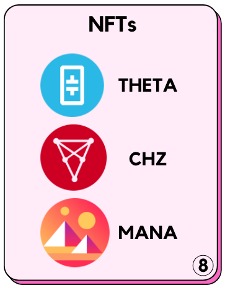
In contrast, Non-Fungible Tokens are unique and identifiable. Thus, no two tokens created will be exactly alike and interchangeable, each will have specific characteristics to define it. For example, a flight ticket is non-fungible. Although there are thousands of them and they all have the same basic characteristics, some characteristics are specific to each ticket such as the seat number, the flight number or the departure and arrival times.
But what is literally driving the craze behind these tokens is digital art, collectibles and video-games. People have realized that a unique digital object can have significant monetary value, just like a piece of art, because of its uniqueness. One famous application of NFTs are CryptoKitties. This decentralized Ethereum-based application allows users to collect virtual cats, similar to the way we can collect Pokemon cards. In this case, each CryptoKitties is represented by a unique ERC-721 token, with its own characteristics and attributes. Each of these characteristics constitutes the genetic code of your cat and will define its physical appearance, therefore its scarcity and hence its value. For the record, the most expensive cat was sold for a mere 600 ETH or about $170,000 at the time of sale. On another note, American digital artist Beeple sold a digital work entitled “Everydays: the First 5.000 days” in NFT for $69 million in crypto assets.
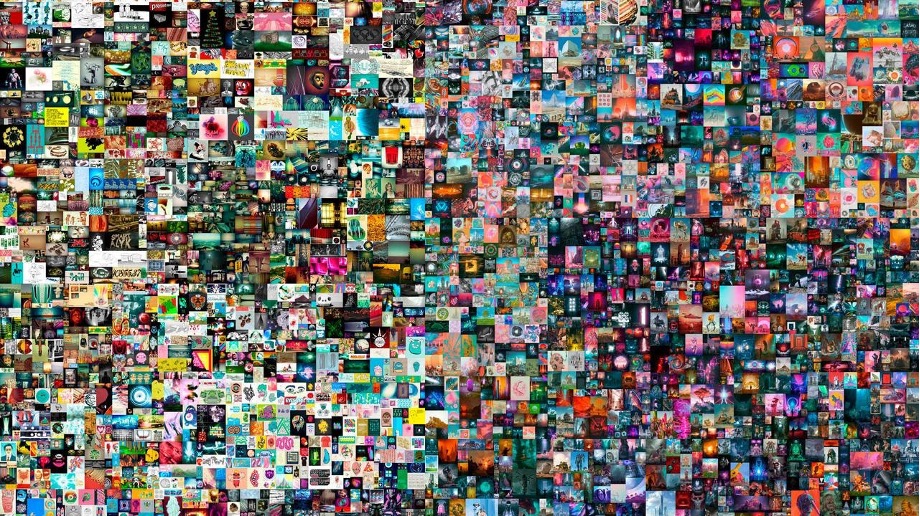
- Everydays: the First 5.000 days by Beeple
Of course, this list of 8 categories is not fixed and shows only the tip of the iceberg. I could have talked about meme crypto assets like DOGE, which has recently gained in popularity, or how some crypto assets are trying to disrupt areas like healthcare, supply chain, data, energy or media. I focused on the most popular sectors, use-cases of crypto assets. Some coins inevitably aim to be multipurpose and therefore can be listed in more than one category. The covered crypto assets are grouped according to their perceived or advertised primary purpose, even if theoretically they can do more.
To conclude, the crypto asset ecosystem is still very young. It is also in constant evolution. The most popular crypto assets, use-cases in 2017 were not the same as in 2021 and it will be a completely different ecosystem in a few years’ time. Some crypto assets will remain based on adoption and utility of the use-case while others will disappear.



